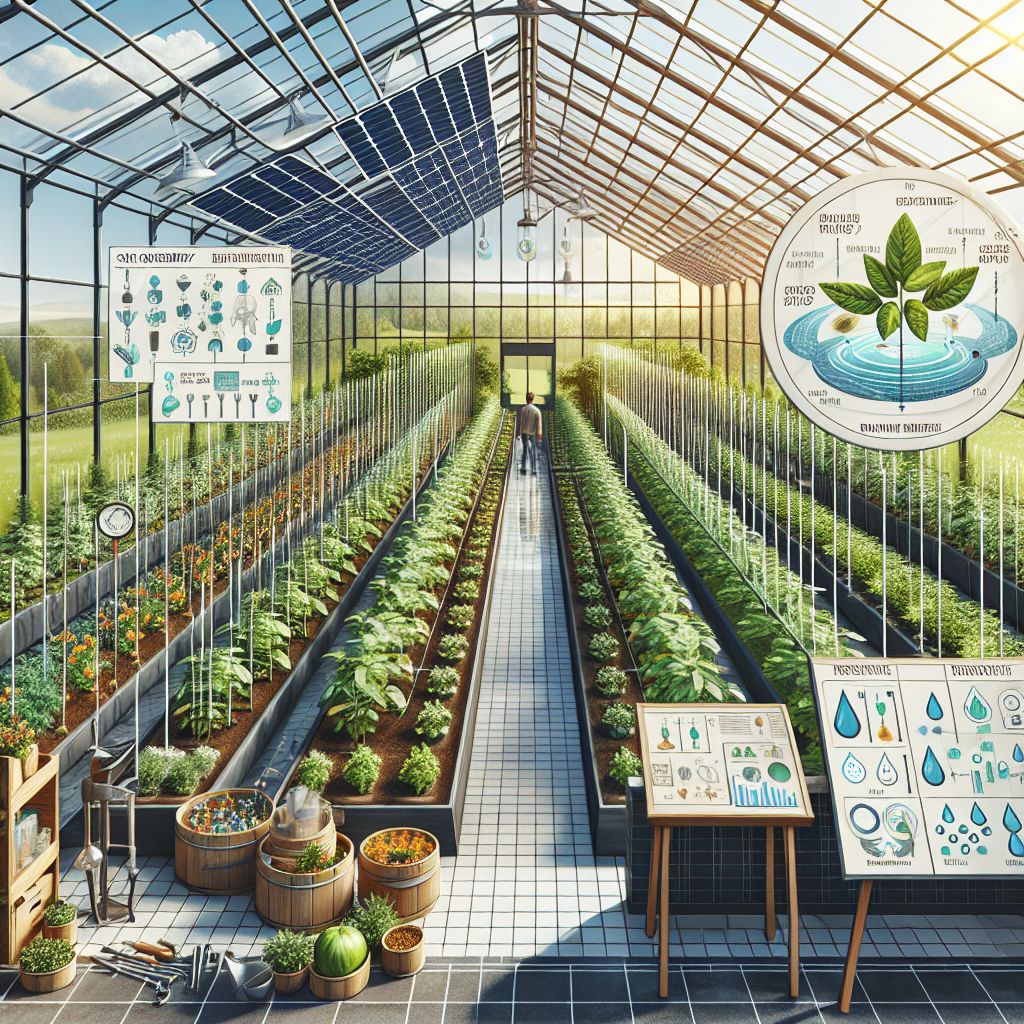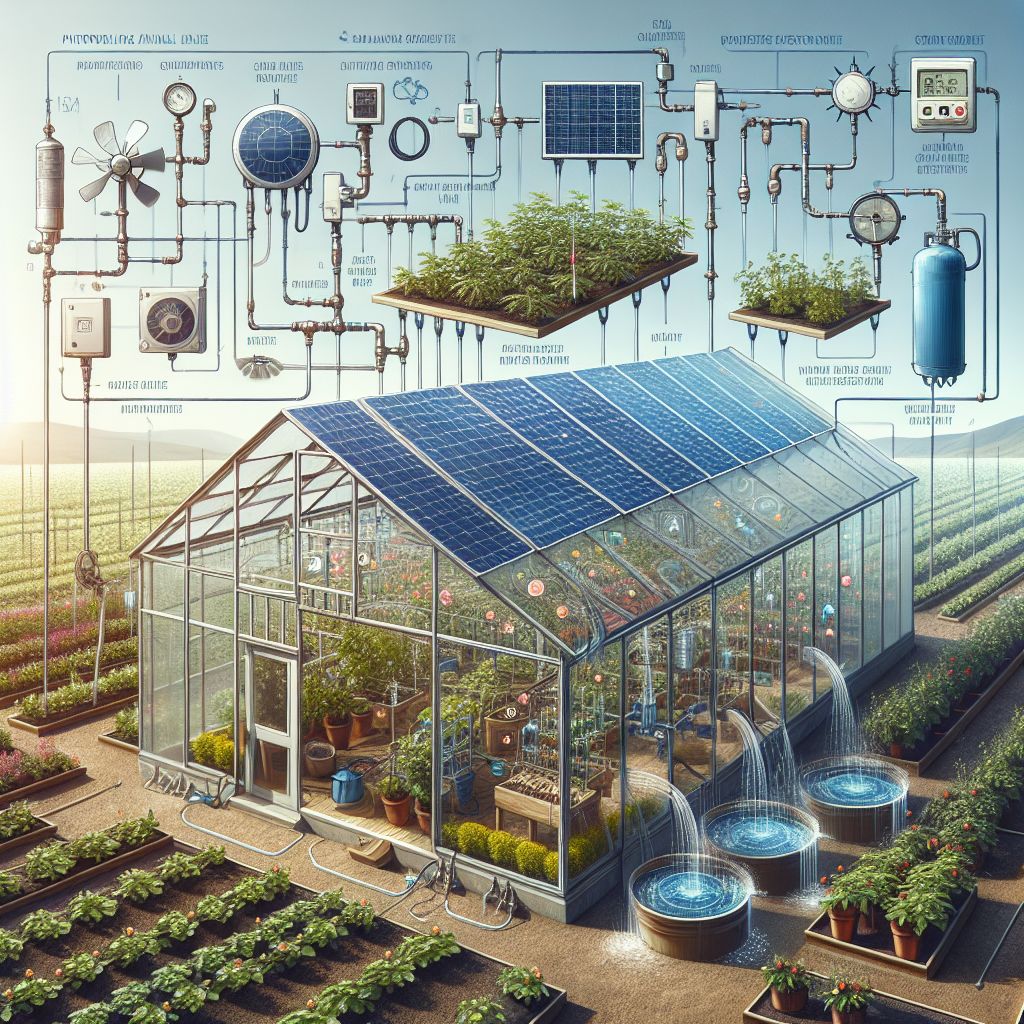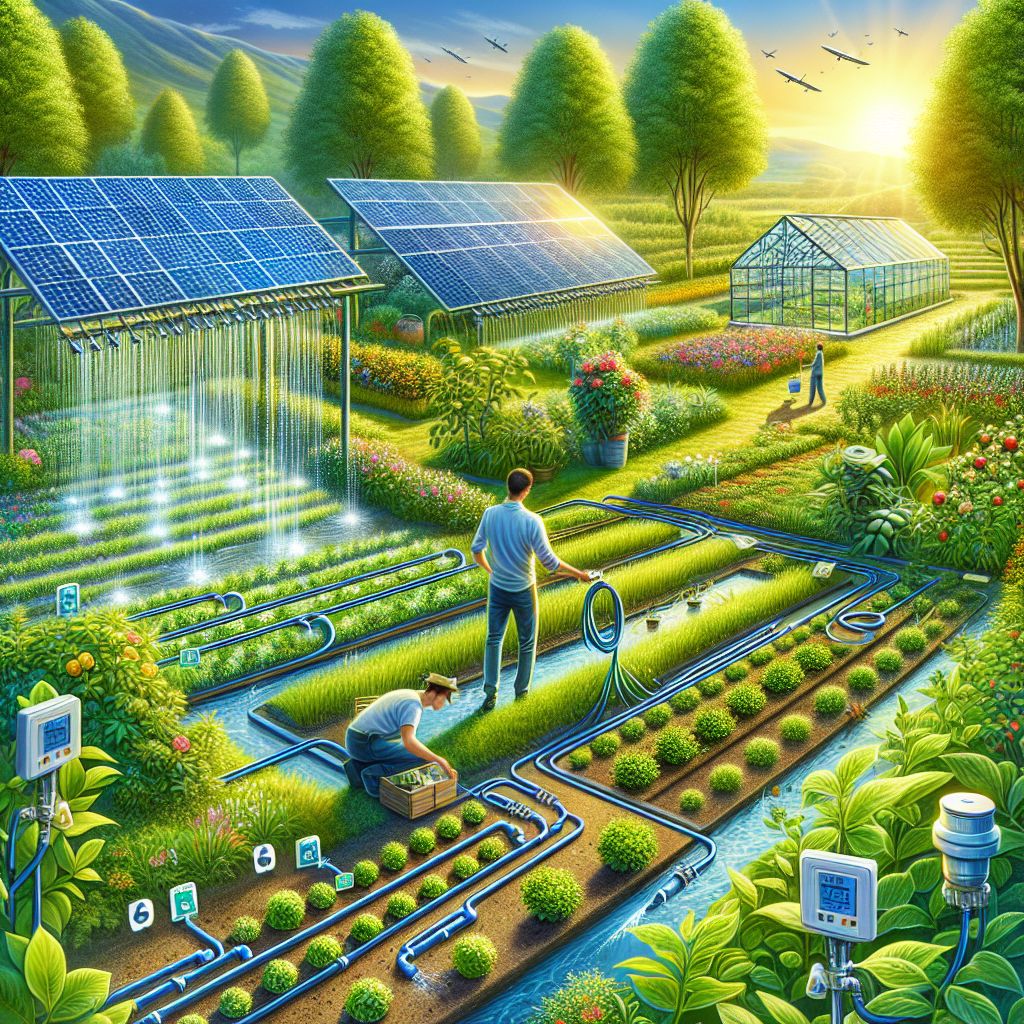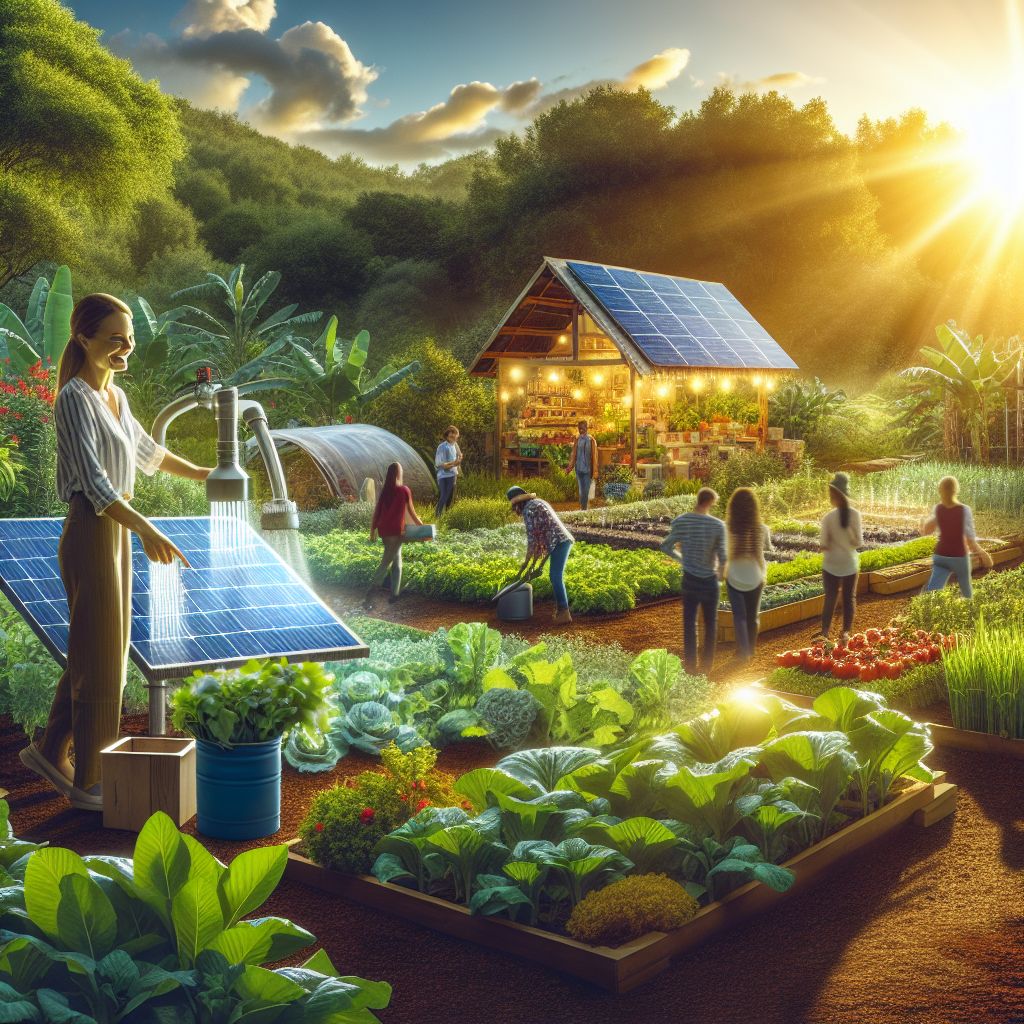
Every gardener knows that the right mix of sun, soil, and water can make your garden thrive. But watering can be time-consuming and wasteful, especially in drought-prone areas. That’s where solar greenhouse irrigation systems come in. They’re a game-changer for anyone looking to save time, save water, and make use of the sun’s power. With these systems, you’re not just watering your plants—you’re helping to build a sustainable future.
Key Points
Solar greenhouse irrigation systems offer a sustainable method for watering plants using renewable energy.
Selecting the appropriate system depends on the size of your greenhouse, the climate, and your budget.
DIY installation is feasible with the correct tools and a basic knowledge of solar energy and irrigation.
Routine maintenance is crucial for the longevity and efficiency of your system.
Solar irrigation not only conserves water, but also reduces your carbon footprint, contributing to a healthier planet.
Soak Up the Sun: Harnessing Solar Power for Greenhouse Growth
Solar-powered greenhouses offer a win-win situation for both the environment and the agriculture industry. By harnessing the power of the sun, we can reduce our carbon footprint, lower energy costs, and create a better environment for plant growth. As we continue to prioritize sustainability and look for ways to reduce our impact on the planet, solar-powered greenhouses are a step in the right direction. So let’s soak up the sun and grow our crops in a more sustainable and environmentally friendly way.
The Importance of Water in Your Greenhouse
Water is the life source of any garden. It is necessary for photosynthesis, nutrient transportation, and the overall health of the plant. In a greenhouse, where the environment is controlled, the efficient delivery of water is vital. Too much or too little can result in poor plant growth or even disease. This is where solairrigation comes in, ensuring that each plant receives the exact amount of water at the right time.
Solar Energy 101: Grasping the Fundamentals of Solar Power in a Greenhouse
Before we get into solar irrigation, let’s first understand the fundamentals of solar power. Solar panels capture sunlight and convert it into electricity. This electricity can then be used to power a variety of devices, including your irrigation system. It’s a clean, renewable resource that reduces dependence on fossil fuels and reduces your carbon footprint. Furthermore, after you’ve made the initial investment in solar panels, the energy from the sun is completely free.

Using Solar Energy to Water Your Plants in a Greenhouse
Picture a watering system that runs by itself, uses the sun for power, and gives your plants a steady supply of water. That’s what solar irrigation is. It’s particularly useful in a greenhouse, where conditions are carefully controlled. The system uses solar panels to power pumps or timers. These control the flow of water from your source to your plants. This makes sure they get the water they need, without wasting any.
How Solar Irrigation Works in a Greenhouse
The solar panel, or photovoltaic (PV) panel, is the most crucial part of a solar-powered irrigation system. It turns sunlight into electricity when the sun is out. This electricity is used right away to run a pump that waters your plants, or it’s stored in batteries for later use when the sun isn’t out. The system usually has a controller that handles when and how much water is given, so the whole process is smooth and efficient.
Picking the Best System for Your Greenhouse
Picking a solar irrigation system isn’t a cookie-cutter decision. You’ll need to think about:
Greenhouse size: Bigger greenhouses may need stronger pumps and possibly more solar panels.
Type of plants: Various plants have unique watering needs.
Local weather: Less sunny areas might need more panels or battery storage.
Budget: Solar irrigation systems can range in cost, but there are choices for every budget.
Solar Irrigation: Is it a DIY project?
Feeling crafty? With a few basic tools and some knowledge, you can install a solar irrigation system yourself. It’s a satisfying task that can save you some cash and teach you more about your greenhouse. Plus, there’s nothing like seeing your garden flourish thanks to a system you set up.
Here is a table with key considerations for picking the right solar irrigation system for your greenhouse:
|
Consideration |
Explanation |
Sources |
|---|---|---|
|
Water Delivery Method |
Choose between drip irrigation, which delivers water directly to the roots, or misting irrigation, which simulates rainfall. A hybrid system can also be used. | |
|
Water Pressure Requirements |
Drip irrigation systems require lower water pressure (15-50 psi) compared to misting systems. Ensure your water source can provide the necessary pressure. | |
|
System Scalability |
Consider the size of your greenhouse and number of plants to determine the appropriate system capacity, whether 12 or 24 watering units. | |
|
Power Source |
Solar-powered systems use photovoltaic panels to charge batteries and run the irrigation pumps, reducing reliance on grid electricity. | |
|
Automation and Control |
Environmental control systems can be integrated to automate watering schedules, temperature, and other greenhouse conditions. | |
|
Installation and Maintenance |
Ensure the system is properly installed by professionals and has a maintenance plan, including filter cleaning and component replacement. | |
|
Water Source and Storage |
The system will need a reliable water source, such as a rain barrel or well, and adequate storage capacity. | |
|
Budget and Incentives |
Factor in the upfront costs as well as potential cost savings from reduced electricity use. Explore any available solar or agricultural incentives. |
Next up, we’re going to get our hands dirty and dive into the details of setting up your solar greenhouse irrigation system. Keep reading for the next part of this guide, where we’ll take you through the process of installation, from collecting your supplies to setting up your system for the best watering. You’re about to become more than just a gardener, but a solar-powered sustainability hero.

Step-by-Step Guide to Setting Up Your Solar Irrigation System
Setting up a solar irrigation system for your greenhouse may seem like a daunting task, but by following these simple steps, you can have an efficient and sustainable watering system for your crops. With the use of solar energy, you can save on energy costs and reduce your carbon footprint while ensuring the healthy growth of your plants. So, go ahead and set up your solar irrigation system and reap the benefits of sustainable agriculture.
Getting Started: Basic Installation
Before anything else, you need to examine your greenhouse and figure out the optimal location for your solar panels. They need to be placed where they will get the most sunlight – usually, this is a south-facing roof or a structure close by. Remember that shadows from trees or buildings might reduce the efficiency of your panels. After you’ve identified the location, you can start installing the mounting hardware, ensuring that it’s firm and steady enough to hold your panels.
After that, you’ll have to plan your irrigation lines. Consider your plant arrangement and where the water needs to be delivered. The objective is to reduce the distance water has to travel in order to decrease pressure loss and ensure uniform distribution. Use high-quality pipes and fittings to avoid leaks, which can be both wasteful and harmful to your greenhouse structure.
Linking Up with the Sun: Installing Your Solar Panels
Now that your mounting hardware is ready, you can proceed to set up the solar panels. If you’re not comfortable with electrical tasks, you may want to get a professional to help with this part. You’ll need to link the panels to a charge controller and batteries if you intend to store power for future use. Make sure all connections are secure and can hold up against weather conditions.
When you’re attaching the panels to your irrigation system, you’ll usually use a solar charge controller to manage the power that’s going to a pump. This pump will then shift water from your source, which could be a well, rainwater collection system, or municipal line, through your irrigation lines and to your plants. It’s a wonderful cycle that begins with the sun’s rays and finishes with feeding your garden.
Setting Up Your System for Ideal Watering
With your system now physically in place, it’s time to get it working. You will set up the controller to water your plants at the most effective times, which are typically early in the morning or late in the afternoon to minimize evaporation. Most controllers give you the ability to establish different zones and watering schedules, which is especially useful if you have a range of plants with different requirements. A well-set up system is key to using just the right amount of water and energy, resulting in a thriving garden and a healthier planet.

Keeping Your Garden Green with Solar Power
Always look for leaks or obstructions in your irrigation lines.
Make sure to clean your solar panels from time to time to ensure they’re working as efficiently as possible.
Change your watering schedule as the seasons change to accommodate for variations in plant growth and weather.
Like any tool used for gardening, your solar irrigation system needs a bit of care to keep it functioning at its best. This includes regularly checking the system for any problems that could prevent it from working properly. It also includes being aware of how your plants’ needs change with the seasons and adjusting your watering schedule to match. With a bit of care, your system will continue to benefit you and your garden for years to come.
Always remember that your solar irrigation system is not just a luxury but a move towards a more sustainable lifestyle. Each water drop it conserves and each kilowatt-hour of electricity it doesn’t consume from the grid is a victory for our planet. And that’s something to be proud of every time you enter your verdant paradise.
So, taking care of your garden using solar power isn’t just good for the environment—it’s also good for your plants. Your plants will flourish with regular, soft watering that imitates the way rain falls naturally. This can result in more robust root systems, healthier growth, and, in the end, a more plentiful harvest.
Why You Should Consider Solar Irrigation for Your Greenhouse
There are many reasons why you might want to consider solar irrigation for your greenhouse. Not only are there environmental benefits, like reducing your carbon footprint and saving water, but there are also practical benefits. Solar irrigation systems can help you save money on your utility bills over time, and because they’re automated, they can also save you time and labor. Plus, they’re scalable, so you can start with a small system and expand it as your garden grows.
This table summarizing the key reasons to consider solar irrigation for your greenhouse, based on the provided search results:
|
Reason |
Explanation |
Sources |
|---|---|---|
|
Reduced Energy Costs |
Solar-powered irrigation systems can eliminate the need for diesel or grid-powered pumps, significantly lowering energy costs for greenhouse operations. | |
|
Sustainability |
Solar energy is a renewable, clean source of power that reduces greenhouse gas emissions compared to fossil fuel-based systems. This supports more environmentally-friendly greenhouse farming. | |
|
Reliability |
Solar-powered irrigation systems can operate independently of the electrical grid, providing a reliable water supply even during power outages. | |
|
Versatility |
Solar irrigation can be used for a variety of applications beyond just crop watering, such as livestock watering and greenhouse climate control. | |
|
Automation |
Solar irrigation systems can be integrated with environmental control systems to automate watering schedules and optimize water usage. | |
|
Suitability for Off-Grid Locations |
Solar irrigation is particularly well-suited for greenhouses in remote or off-grid areas that lack access to traditional power sources. |
Optimizing Plant Health with Consistent Upkeep
Consistent upkeep is the secret to a thriving solar irrigation system and, consequently, a thriving garden.
Be on the lookout for any signs of wear and tear. Replace any broken parts immediately to avoid system breakdown. Watch your plants for signs of over or under-watering, which can be a sign of an issue with your system’s programming or a faulty component. By staying alert, you can catch issues early and keep your system running smoothly.
Don’t forget, the most effective maintenance is the one that prevents problems from happening. By setting a regular inspection schedule for your system, you can prevent many typical problems before they even begin. This includes cleaning filters, checking battery levels, and making sure the solar panels are clear of debris.
Moreover, it’s crucial to remember that each piece of your solar irrigation system plays a part. Whether it’s the solar panels, the pumps, or the drip lines, every part needs to be in perfect working order for the system to operate at its best. Consider it like a team, where every member needs to be at their best to achieve victory.
Common Solar Irrigation Problems in a Greenhouse and How to Fix Them
Even the most reliable systems can have problems from time to time. Perhaps your plants are wilting, or you’ve noticed that your water bill is higher than usual. These could be signs that there’s something wrong with your solar irrigation system. The usual suspects are blocked filters, battery issues, or a faulty pump. The good news is that most of these problems can be resolved with some basic troubleshooting.

Walking the Talk: The Global Influence of Solar-Powered Irrigation
Setting up a solar-powered irrigation system is more than just a boon to your garden. It’s a small but significant stride towards a broader goal of sustainability. By utilizing renewable energy to run your irrigation, you’re lessening the dependence on fossil fuels and aiding in the fight against global warming.
Case Studies: Triumphs in Solar Irrigation
There are countless stories of gardeners and farmers who have seen incredible improvements after making the switch to solar irrigation. These stories range from small family-owned greenhouses to large-scale agricultural operations, and they all share a common theme: increased yields, lower water usage, and reduced energy costs.
The Role of Solar Irrigation in the Broader Context of Environmental Sustainability
Solar irrigation is just a single aspect of the broader sustainability effort. When used in conjunction with other environmentally friendly activities such as composting, collecting rainwater, and using organic fertilizers, it forms part of a comprehensive approach to gardening that is more considerate of the environment. It is a matter of thinking long-term and understanding that every sustainable decision, no matter how minor, contributes significantly to the overall effect. Learn more about how solar irrigation works in this context.
Furthermore, when you share your solar irrigation experiences, you can encourage others to make similar changes. This ripple effect can spread throughout communities, leading to more widespread adoption of sustainable practices and a healthier planet for future generations.
Additional Uses of Solar Energy in Greenhouses
Why limit solar power to irrigation? Solar energy can also be used for other greenhouse needs. It can provide extra lighting, power fans for ventilation, or even operate heating systems during the colder months. The versatility of solar power makes it a crucial resource for the innovative gardener.
This table summarizing the different ways solar power can be used in a greenhouse:
|
Usage |
Description |
|---|---|
|
Powering Irrigation System |
Solar-powered irrigation controllers, valves, and pumps can be used to automate and optimize water usage in the greenhouse. 1, 2 |
|
Generating Electricity |
Photovoltaic solar panels can be installed on the greenhouse roof or adjacent structures to generate electricity to power fans, lights, and other equipment. 2, 4 |
|
Providing Thermal Mass |
Water, rock, or sand tanks inside the greenhouse can act as thermal mass, absorbing heat during the day and releasing it at night to regulate temperature. 4 |
|
Greenhouse Glazing |
Photovoltaic materials can be integrated into the greenhouse glazing, allowing some light transmission while generating electricity. 2 |
|
Powering Fencing |
Solar-powered electric fencing can be used to protect the greenhouse from animal intrusion without relying on the grid. 4 |
|
Rainwater Harvesting |
Solar-powered pumps can be used to distribute rainwater collected in tanks for irrigation purposes. 4 |
|
Automating Controls |
Solar-powered sensors and controllers can be used to automate greenhouse climate, irrigation, and other systems. 5 |
By leveraging solar power in these various ways, greenhouses can become more self-sufficient, sustainable, and cost-effective to operate.
Wrapping Up:
Choosing to use a solar greenhouse irrigation system is a wise and eco-friendly choice for any Farmer. It not only makes the watering process more efficient, but it also helps the environment by saving water and using less energy. Although the initial setup might need some investment and work, the long-term advantages of lower water and electricity costs and supporting sustainable practices make it a worthwhile endeavor.
As we’ve seen, these systems can be modified, expanded, and are appropriate for all kinds of greenhouse sizes and styles. If you properly plan, install, and maintain your solar irrigation system, it can give you many years of effective and environmentally friendly service for your garden.
Welcome to the Future: The Road Ahead with Solar Irrigation in a Greenhouse Environment
There’s no doubt that the future of gardening is green, and solar-powered irrigation systems are leading the charge in this eco-friendly revolution. By adopting this technology, gardeners can not only boost the health and productivity of their plants, but also play an active part in safeguarding our planet for future generations. The road ahead is clear: solar irrigation is a critical element of a sustainable, self-sufficient greenhouse that is in line with the ideals of conservation and environmental friendliness.
Common Questions
Can Solar Irrigation Systems Be Used in All Climates?
Solar irrigation systems are flexible and can be modified to function in almost all climates. However, the quantity of solar panels and the capacity of the battery storage may need to be increased to suit areas with less sunlight. In regions that are very cloudy or rainy, a hybrid system that uses solar power and another form of energy may be required for consistent operation.
What is the Average Price of a Solar Greenhouse Irrigation System?
The price of a solar greenhouse irrigation system can range greatly depending on the size of the greenhouse, the complexity of the system, and the quality of the components. On average, you could be looking at a few hundred to several thousand dollars. Keep in mind the potential savings on water and electricity bills when thinking about the overall price.
Can I Upgrade My Current Greenhouse to Include a Solar Irrigation System?
Indeed, you can upgrade your current greenhouse to include a solar irrigation system. This upgrade requires the installation of solar panels, a water pump, and an irrigation controller, as well as the necessary plumbing. This is an excellent method to make your greenhouse more energy-efficient and sustainable.
How Can I Keep Track of My Solar Irrigation System’s Performance?
You can keep track of your solar irrigation system’s performance by watching your water usage and the health of your plants. Many solar controllers can also monitor your system, allowing you to keep an eye on energy use and water delivery. Regular maintenance checks will help you identify any problems that could impact performance.
How Can You Keep a Solar-Powered Irrigation System in a Greenhouse in Good Condition?
There are several best practices to keep in mind when maintaining a solar-powered irrigation system:
Make sure to regularly clean and inspect solar panels to keep them working at their best.
Check the irrigation lines for any leaks or clogs that could interfere with the water flow.
Keep an eye on the system’s batteries and replace them when necessary to maintain a steady power supply.
Change the watering schedule based on the seasons and the specific needs of your plants.
Ensure the water pump and filters are clean to avoid any malfunctions.
By sticking to these practices, you can make sure your solar greenhouse irrigation system runs smoothly and continues to offer environmental and economic benefits for many years.







Leave a Reply